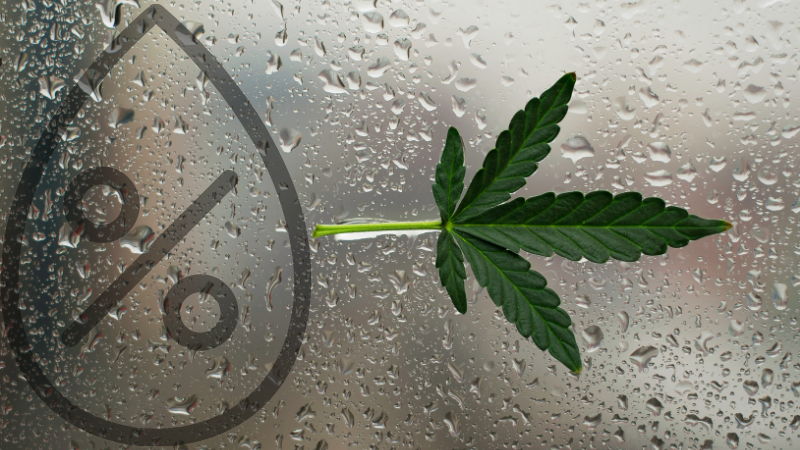It’s Past Time for a Moisture Determination Standard in Cannabis
State regulators need to address the lack of a standard in moisture determination that leads to significant lab-to-lab discrepancies in cannabis potency ratings.

Dr. Zachary Cartwright is a lead food scientist and isotherm application consultant at METER Group. He helps customers achieve complete moisture analysis of their products and is an expert in the use of the AQUALAB Vapor Sorption Analyzer.…
As California moves to tighten up its cannabis testing standards, consumers are becoming aware of a surprising fact: potency numbers are heavily influenced by a test that can be easily—and legally—rigged. In November, the State of California started a project to develop a standardized method to ensure integrity in lab testing. New York and New Jersey already have standardized methods. But even these methods will not be enough to stop issues around “lab shopping” unless regulators get a deeper understanding of the lowly moisture content test and write better standards for how it should be performed.
When it comes to potency determination, labs tend to be most concerned about the Liquid Chromatography Mass Spectrometer (LCMS), which will determine an “as is” THC content for a sub-sample of the cannabis being tested. At the same time, another sub-sample will be tested using whatever moisture content method is preferred by the lab. Both these numbers come together to determine final potency, which is reported on a dry weight basis.
The requirement to report on a dry weight basis is intended to level the playing field, but because most states have no standard for moisture content determination, the value is easily manipulated.

Cannabis researcher Conner Jeffries has found that commonly used moisture content methods deliver wildly different moisture content values for the same sample. In a recent experiment, he equilibrated a large sample of cannabis plant matter to a specific moisture content, then tested sub-samples using a variety of different well-accepted moisture methods including Karl Fischer, moisture balances, and oven loss-on-drying at temperatures set by the AOAC International, American Herbal Pharmacopoeia (AHP), and European Pharmacopoeia (EP). Moisture contents on these essentially identical sub-samples ranged from 7.3 percent moisture to 13.8 percent moisture, resulting in a whopping 108 percent difference in the final percent of THC values.
Most states have no requirements about which moisture content method labs should use. That means, as Jeffries notes, "Just by changing your moisture content method, you could get a THC content that is 108 percent larger. That is definitely a regulatory oversight.”
"The moisture test basically lets producers put a finger on the scale," he says. "There's not necessarily a quid pro quo, but a lab can develop the reputation for returning higher numbers, and that lab then tends to get more business. There are no standards to prevent them from doing it. This can lead to the accusation of ‘lab shopping,’ where growers and manufacturers go from lab to lab to find the potency numbers they want.
While most labs don’t intentionally manipulate results, when the faster, easier way also delivers the results clients want, there’s little incentive to change. Even labs that are committed to the highest level of integrity tend to underestimate the complexity of moisture content measurements. Many rely on the speed and simplicity of fast moisture measurements without understanding the caveats that come along with the number. One of the most significant of these is the effect of test temperature on volatiles.
When samples are heated to drive off the water, volatile compounds can also be driven off. Moisture content determination in cannabis is particularly tricky because terpenes and other compounds found in cannabis volatilize at relatively low temperatures. As the test temperature goes up, moisture over-estimation becomes a bigger issue. However, at significantly lower temperatures, it takes a lot longer to dry the sample completely. If the test is ended too soon, moisture can be under-estimated. The American Herbal Pharmacopoeia and European Pharmacopoeia standards represent the two ends of this spectrum.
The EP requires that cannabis moisture be tested at 40 degrees C in a vacuum oven for 24 hours. The AHP specifies 105 degrees C for 2 hours.
BALANCING THE GAME
For regulators, the question is how to write a practical standard that levels the playing field, restores consumer and producer trust, and prevents unscrupulous operators from manipulating the system.
“The European Pharmacopoeia standard may give the best answer,” says Jeffries, “but part of the problem is that waiting 24 hours for a moisture content reading is not practical.”
That means that a standard will have to address how the faster, more practical indirect tests can be benchmarked against more-reliable direct tests.
Requiring companies to calibrate faster indirect measurements to a high-quality direct method like the European Pharmacopoeia standard could give everyone a bit of what they need.
“I wouldn’t expect a standard to require direct measurement for every sample that comes in the door,” noted Jefferies. “What I would expect to see regulatory bodies address is the need for cannabis moisture content measurements to be verified with periodic direct measurements made at a specific temperature. And based on my research, I would like to see that temperature be much lower than those that are in common use right now.